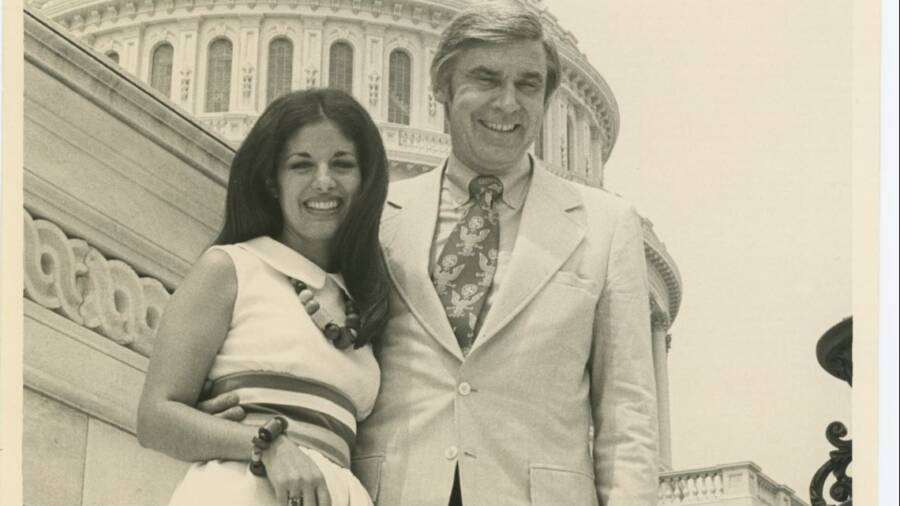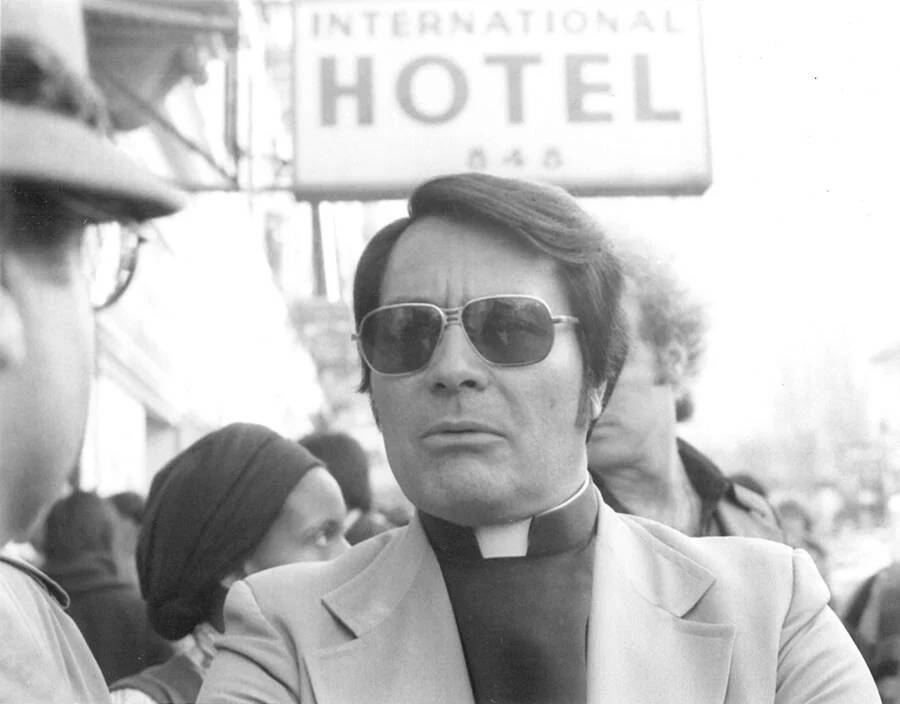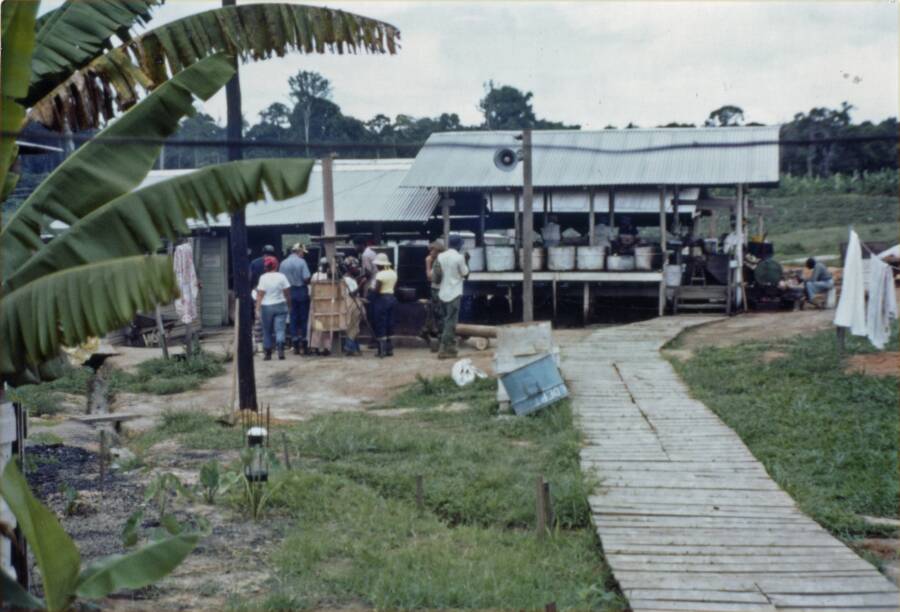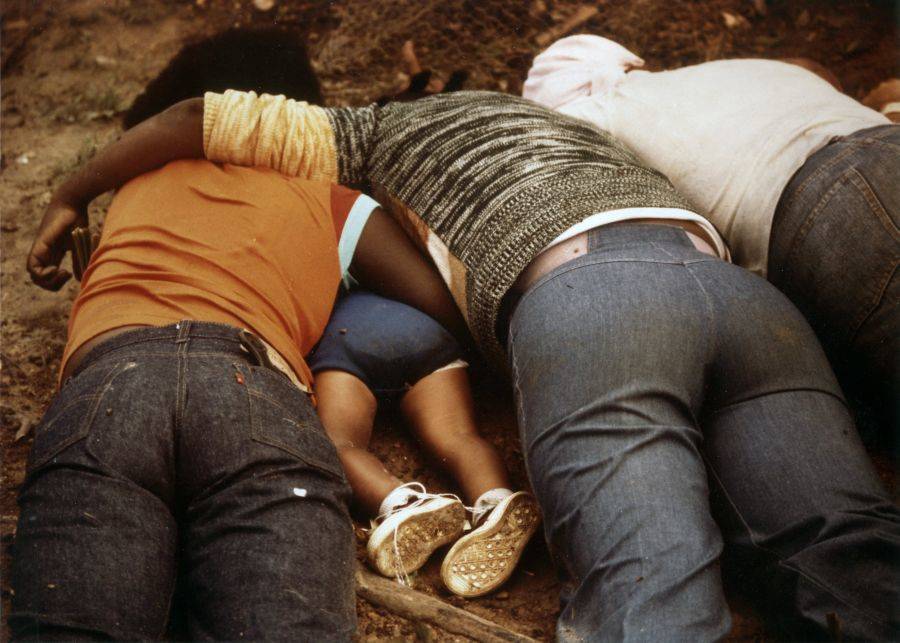A maverick politician, Leo Ryan traveled to Guyana in November 1978 to investigate cult leader Jim Jones — and he paid for it with his life.

Public DomainU.S. Congressman Leo Ryan in 1977.
By 1978, Jim Jones’ cult, the Peoples Temple, had amassed a concerning number of followers — so many that the cult could no longer contain the disturbing rumors that were swirling about the human rights violations being committed at Jonestown, their Guyana-based settlement. As this all came to a head, Jim Jones prepared his followers for a mass suicide — but not before an investigation into the Jonestown settlement was conducted by U.S. Congressman Leo Ryan.
Ryan, a Democratic Representative from California, had made a name for himself as a maverick politician. He once had himself arrested and briefly incarcerated at Folsom State Prison while investigating prison reform, and he also traveled to Newfoundland in Canada to protect seals from inhumane hunting practices — at one point laying down on the ice between the hunters and the animals. Ryan was also an outspoken critic of the CIA.
Clearly, Leo Ryan was known for his willingness to personally investigate issues he was passionate about. So, after learning about the alleged abuse of people at Jonestown — many of whom had once been his constituents in the San Francisco area — Ryan decided, once again, to personally investigate the matter. Unfortunately, this time, it cost Ryan his life.
Leo Ryan’s Life And Political Career
Born on May 5, 1925 in Lincoln, Nebraska, Leo Joseph Ryan Jr. moved around a lot as a child. His family lived in a number of states, including Illinois, Florida, New York, Wisconsin, and Massachusetts. In 1943, Ryan graduated from Campion Jesuit High School in Wisconsin, and soon thereafter, he joined the U.S. Navy to serve as a submariner during World War II.
After his service, Ryan attended Creighton University in Nebraska, graduating in 1949 with his bachelor’s, then receiving his master’s in 1951. He then took a job as an English teacher in Nebraska, and later as a school administrator before relocating to California. There, he earned a seat on South San Francisco’s city council — and eventually became mayor of that city in 1962.
But he wouldn’t hold that position for long, as he was soon elected to the California State Assembly. And in 1972, Ryan was elected to the U.S. Congress from California’s 11th District — a position he held until his death.
Jackie Speier, Ryan’s legal counsel who accompanied him to Jonestown, would later describe the late politician as “one courageous legislator who did the uncommon thing, and lost his life in the process,” according to SFGATE.
As a politician, Ryan typically favored progressive legislation, but he would occasionally vote across the aisle when it came to certain issues relating to education. His district field representative, Robert Caughlan, said that Ryan wanted “to keep [liberals] sullen, but not mutinous.”

Jackie Speier/UC DavisJackie Speier with Leo Ryan.
Speier, on the other hand, described Ryan’s style as “experiential legislating.”
To illustrate this, you only have to look at how Ryan tried to understand the issues. In the late 1960s, after the Watts riots that protested poor conditions in the Watts neighborhood of Los Angeles, Ryan posed as a substitute teacher at a local school to see what the conditions were like.
He did a similar thing in 1970, when he intentionally landed himself in Folsom State Prison for 10 days, once again hoping to gain a lived understanding of the conditions. At the time, he was on a committee overseeing prison reform. Even though some of his colleagues thought he only pulled these stunts to get attention, those who worked with Ryan saw it differently.
“Leo understood the importance of advancing social agendas through public education,” Caughlan said.
It was this same attitude that led Ryan to investigate Jonestown for himself. Of course, he had no clue just how dangerous this would be.
Inside Jonestown, The Cult Settlement That Led To History’s Biggest Murder-Suicide
In the 1950s, an Indiana preacher named Jim Jones founded a church that came to be known as the Peoples Temple. The church’s initial message was one of social justice, with a focus on racial equality. In fact, Jones’ church was one of the first mixed-race churches in the Midwest.

Wikimedia CommonsJim Jones, the leader of the Peoples Temple.
But as he amassed more and more followers, he grew increasingly paranoid and authoritarian. He relocated the Temple several times, eventually settling in San Francisco, California in the mid-1960s. By the early 1970s, the Peoples Temple had reached an alleged peak of about 20,000 members.
Around this time, allegations of abuse in Jones’ church began to surface. Facing mounting scrutiny, Jones relocated once again, this time establishing a whole new settlement in Guyana called Jonestown in 1977.

The Jonestown InstituteReporters at Guyana’s Port Kaituma airstrip, likely on November 17, 1978, shortly before Leo Ryan’s murder at the site.
In the settlement, Jones promised a socialist utopia free from external pressures. However, life in Jonestown was far from idyllic. Members endured harsh conditions, long working hours, and Jones’ absolute control. They were isolated, their movements and communications restricted.
Given that the Peoples Temple had been located in San Fransisco for some time, Jones’ rumored actions were certainly on Leo Ryan’s radar. Ryan was also well aware that many family members of Jonestown cultists were deeply concerned about their loved ones. Acting on these concerns, Ryan decided to do as he had always done — take a look for himself.
Leo Ryan’s Fateful Investigation Into Jonestown
Had Leo Ryan known that his investigation into Jonestown would pave the way for a horrible tragedy, perhaps things would have played out differently. Unfortunately, there’s no changing history.
Hearing the growing concerns of family members of Jonestown cultists, Ryan secured approval for an official delegation visit — not an easy feat, as many of Jones’ allies had tried to prevent him from coming. Members of the media, aides, and several concerned family members traveled with him to Guyana with the aim of assessing living conditions, interviewing residents about their experiences, and providing any necessary assistance.
He reportedly greeted a group of cult members at the Peoples Temple’s headquarters: “Hi, I’m Leo Ryan. I’m the bad guy. Does anyone want to talk?”

San Diego State University ArchivesResidents of Jonestown.
However, upon his arrival at Jonestown, Ryan and his team encountered a meticulously orchestrated facade of normalcy. Jones and his followers presented a picture of a happy community, and initial interviews with residents upheld this deceit. They couldn’t keep the lie going forever, though.
Some residents, seizing the opportunity that Ryan’s presence presented, discreetly communicated their desire to leave. They shared stories with Ryan of abuse, fear, and disillusionment. Ryan, moved by their pleas, assured them that he would get them out of Jonestown.
Reports stated that 16 people wanted to leave and defect from the cult (though one “defector” was later found to be a Jones loyalist).
Jones, on the other hand, simply couldn’t allow anyone to leave, even though hundreds remained behind at the settlement. At one point before Ryan departed with the defectors, a Jones loyalist attacked him, unsuccessfully trying to stab him to death. Apparently, Jones saw even a small number of defectors as a challenge to his control. As Ryan quickly hurried off with the people who wanted to leave the settlement — and rumors spread of more possible defections — Jones hatched a sinister plan.

Bettmann/Getty ImagesA vat of cyanide-laced Flavor Aid, which killed over 900 people in Jonestown.
On the day of Ryan’s departure, November 18, 1978, his delegation and the defectors gathered at Guyana’s Port Kaituma Airstrip. But before they could take off, several of Jones’ armed followers ambushed them and opened fire, killing Ryan, three journalists, and one defector. Many others were wounded.
Soon afterward, back in Jonestown, Jones put his plan of a “revolutionary suicide” into action. He had already instructed his followers to rehearse their own deaths many times, often summoning them to the central courtyard and ordering them to take a drink from a large vat. But this was no rehearsal.

Frank Johnston/The Washington Post/Getty ImagesVictims of the Jonestown Massacre, found holding each other.
Jones, claiming that authorities would be “parachuting in” at any moment following the death of “the Congressman,” warned his followers of a terrible, torturous fate that awaited them. Then, he claimed that there was a way to “die with a degree of dignity” — by drinking cyanide-laced Flavor Aid.
In the end, over 900 people in Jonestown died from consuming the poison on that November day. Horrifically, many did not willingly drink the poison — and some were forcibly injected with syringes. That’s why it’s often called the Jonestown Massacre today, rather than a “suicide.” It remains the largest murder-suicide in modern history, and a stark reminder of the horrifying power charismatic leaders can hold over their followers.
As for Leo Ryan, he’s remembered for his determination to help people, even if that meant making the ultimate sacrifice. As his friend George Corey put it: “He would march into the heart of Hell to see it firsthand.”
After reading about Leo Ryan’s inspiring life and his investigation into Jonestown, go inside the tragic mass suicide of the Heaven’s Gate cult. Then, learn about more depraved cult leaders from history.





